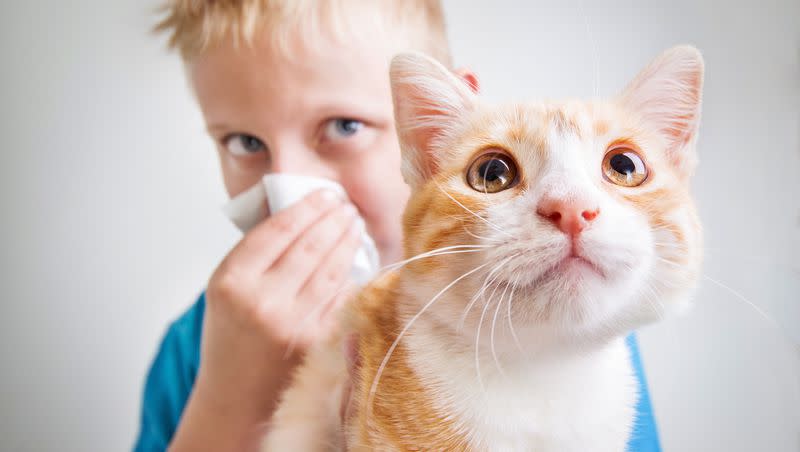Want to prevent your kids from having allergies? Get a pet while you’re pregnant

Are your children begging for a cat or dog? Sure, pets are a lot of work, but you might want to go ahead and get one or two, especially if you’ve got a baby on the way. Children who are exposed to cats and dogs either while in utero or as infants are less likely to develop food allergies, according to a new study.
The research, which was conducted in Japan, was published Wednesday in PLOS One, a peer-reviewed journal published by the Public Library of Science. The researchers used a statistical method known as regression analysis to run data collected from more than 95,000 Japanese families. The numbers revealed that exposure to cats or dogs during both fetal development or as a newborn led to a reduced risk of food allergies up until the child turned three.
But not all pets are created equally. While both dogs and cats seem to confer a protective effect, the animals are associated with reduced risk of different kinds of food allergies. “Dog exposure was estimated to reduce the incidence risk of egg, milk and nut allergies, and cat exposure was estimated to reduce the incidence risk of egg, wheat and soybean allergies,” the researchers reported.
While the reasons for the protection are unknown, the researchers said it could be that exposure to pets causes changes in the microbiota or stimulates greater immune function.
If you’re thinking about a smaller, easier-to-manage pet such as a hamster, well, you might want to reconsider. Hamsters were shown to increase the likelihood of developing a nut allergy. Birds and turtles seemed have no effect.
Related
The new report confirms what earlier studies have — that there is a positive link between childhood exposure to pets and health.
A 2018 study that looked at children between the ages of 7 to 9 found that those who had pets in the first year of life had a reduced likelihood of allergy development. That study also suggested that the more animals the home had, the better: that is, as the number of animals increased, “allergic manifestation” decreased.
“Sensitization to animals, as well as pollens, also decreased with increasing number of animals in the household,” the authors wrote. Their findings suggested a “‘mini-farm effect,’ whereby cats and dogs protect against allergy development,” the researchers said, referring to studies showing that children who grow up on farms are less prone to both allergies and asthma.
Similarly, a number of studies conducted in recent years have found that having a cat or dog in the house during the first year of life also lessens the likelihood of developing asthma.

